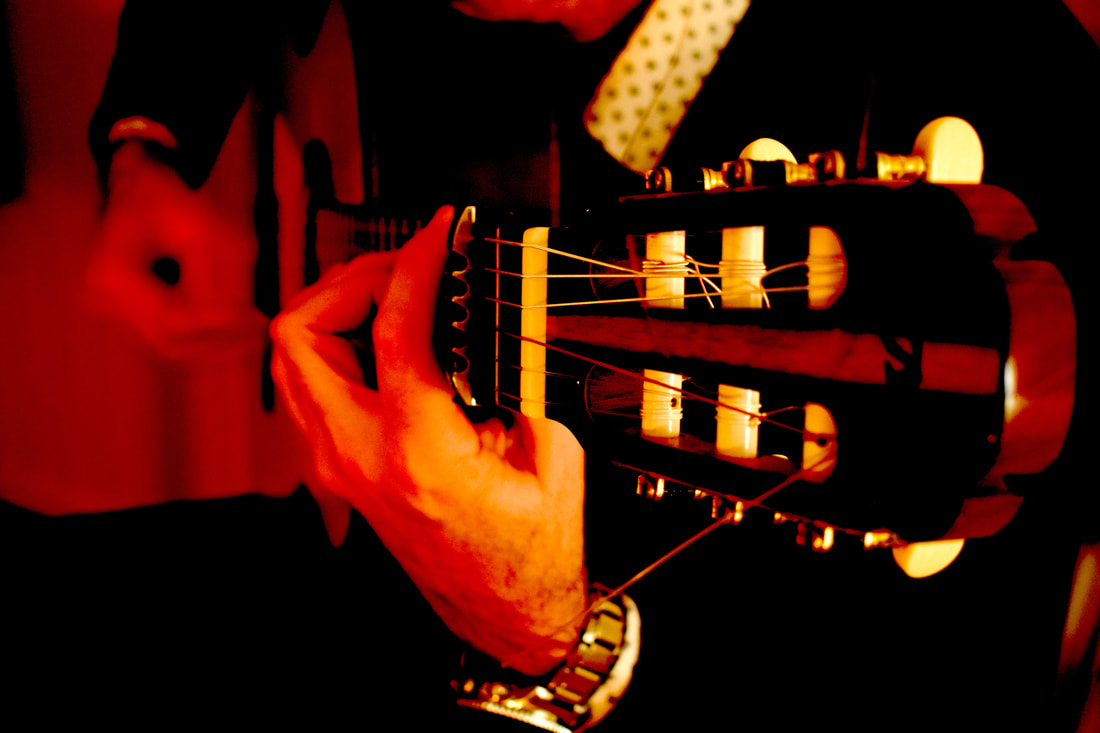One of the final right hand techniques we look at during Rafael's beginner guitar flamenco course is the arpeggio – of which we include a video on it below.
In this post we are only talking about the right hand for the flamenco arpeggio – because this is the part that requires practice (as with most of flamenco guitar – it is the right hand that needs work!)
Once your right hand is able to play it, you can throw in any left hand chord or sequence you wish, which you can learn as you go.
As Rafael discusses, the key to getting this right is to place your right-hand fingers correctly on each string before playing the arpeggio. They should be ever so gently resting on top of the strings, rather than applying a lot of weight so as to cause tension on the strings. A lot of this happens through having correct seated guitar posture and from keeping your hands and shoulders relaxed.
Your thumb can begin with a 'rest stroke' – that is, it strikes downwards and then gently rests on the string below. The next three fingers (index, middle and ring) can do 'free strokes' - that is, after plucking, they do not rest on the above string but stay suspended within your hand.
Practice this nice and slowly to a metronome. Afterwards you can add in chord shapes and flamenco chord variations.
Learn from a Master Who's Performed for Royalty: Start Your Flamenco Journey Today
- Unlock this article & video library for free
- Join thousands of guitarists who finally got past only 'knowing some basic chords'
- Learn flamenco from a lifelong performer & celebrity teacher from Madrid
- Rafael has taught EOB (Radiohead), Jack Peñate & played for HRH Elizabeth II (etc)
By entering your email you agree to receive email updates from Flamenco With Rafael. See our Privacy Policy.




